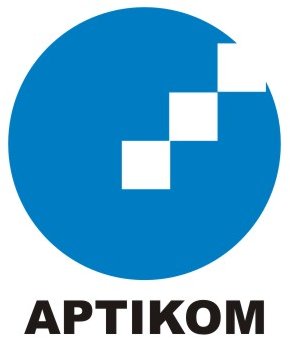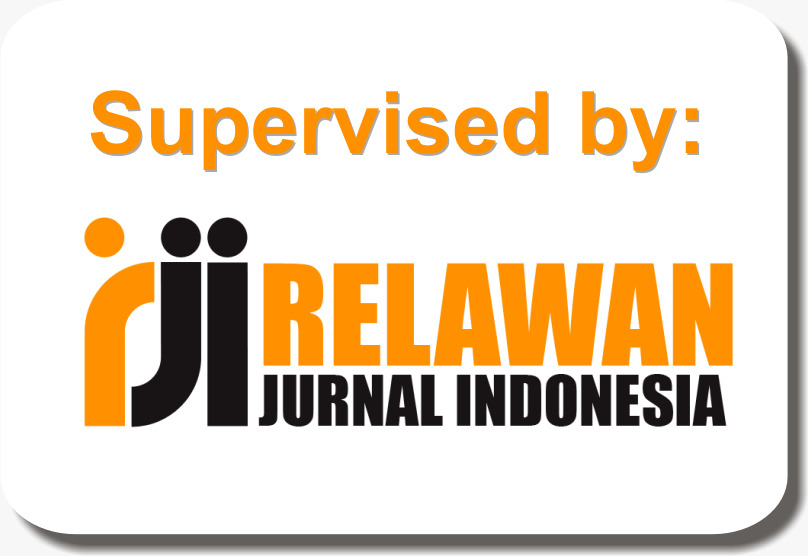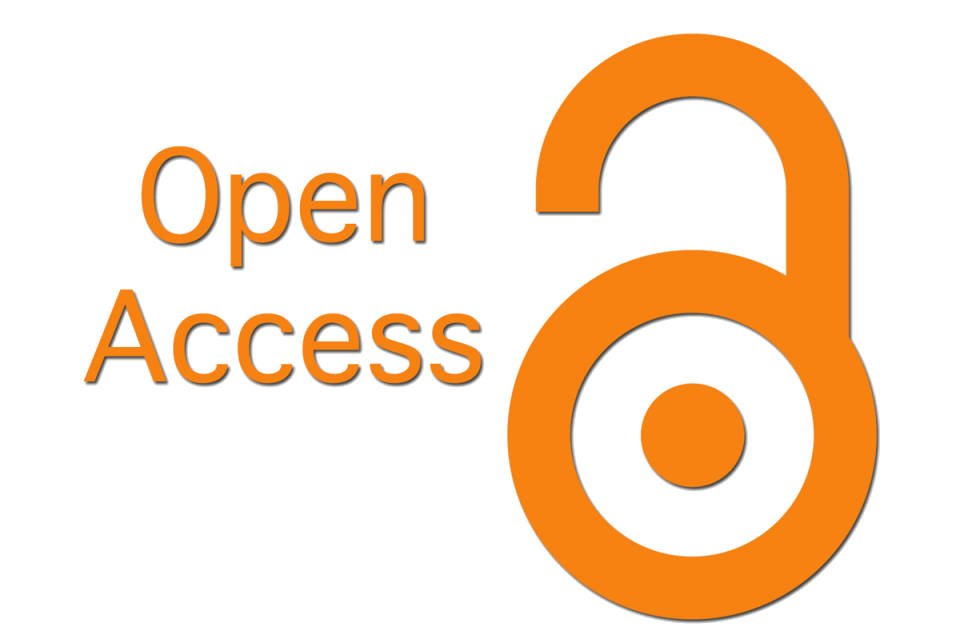PERAN MEDIA PEMBELAJARAN BERBASIS AUGMENTED REALITY (AR) TERHADAP LITERASI TEKNOLOGI DAN KEMANDIRIAN BELAJAR SISWA PADA MATA PELAJARAN TEKNOLOGI INFORMASI DAN KOMUNIKASI
Abstract
Full Text:
PDFArticle Metrics :
References
Liaw, S. S., & Chen, G. D. (2016). Users’ attitudes toward web-based collaborative learning systems for knowledge management. Computers & Edu-cation, 50(3), 950–961. https://doi.org/10.1016/j.compedu.2006.09.007
Bacca, J., Baldiris, S., Fabregat, R., Graf, S., & Kinshuk. (2018). Augmented reality trends in education: A systematic review of research and applica-tions. Educational Technology & Society, 17(4), 133–149. https://www.j-ets.net/ETS/journals/17_4/10.pdf
Huang, Y. M. (2019). The factors that predispose students to continuously use cloud-based mobile learning applications. British Journal of Educational Technology, 50(6), 2736–2755. https://sci-hub.se/10.1016/j.compedu.2016.02.016
Ibáñez, M. B., & Delgado-Kloos, C. (2018). Augmented reality for STEM learning: A systematic review. Computers & Education, 123, 109–123. https://doi.org/10.1016/j.compedu.2018.05.002.
Mayer, R. E. (2017). Multimedia learning (2nd ed.). Cambridge University Press.
Yilmaz, R. M. (2017). Exploring the role of AR technology in developing 21st-century skills in K-12 education. Turkish Online Journal of Distance Education, 18(4), 130–149. https://dergipark.org.tr/en/pub/tojde/issue/16931/176753
Ng, W. (2023). Empowering students through digital literacy: Pedagogies and practices. Routledge.
Sari, R. F., & Nugroho, Y. (2020). Integrasi AR dalam pembelajaran TIK untuk meningkatkan kemandirian belajar siswa. Jurnal Pendidikan Teknologi Informasi dan Komunikasi. https://jurnal.ustjogja.ac.id/index.php/jptik/article/view/1234
Ng, W. (2023). Empowering students through digital literacy: Pedagogies and practices. Routledge.
Prensky, M. (2012). From digital natives to digital wisdom: Hopeful essays for 21st century learning. Corwin Press.
Radianti, J., Majchrzak, T. A., Fromm, J., & Wohlgenannt, I. (2020). A systematic review of immersive virtual reality applications for higher education: Design elements, lessons learned, and research agenda. Computers & Education, 147, 103778. https://doi.org/10.1016/j.compedu.2019.103778
Ng, W., Nicholas, H., & Williams, A. (2015). Digital literacy and learning in the 21st century: Exploring the interplay between digital participation, digital proficiency and digital productivity. Education and Information Technologies, 20(3), 385–407. https://doi.org/10.1007/s10639-013-9290-7
Zimmerman, B. J. (2017). Becoming a self-regulated learner: An overview. Theory Into Practice, 41(2), 64–70.
Lin, T. J., Hsieh, M. C., & Tsai, C. C. (2018). Investigating the role of self-regulation in learning with augmented reality. Educational Technology Research and Development, 66(3), 643–669. https://link.springer.com/article/10.1007/s11423-018-9570-1
Ibáñez, M. B., & Delgado-Kloos, C. (2018). Augmented reality for STEM learning: A systematic review. Computers & Education, 123, 109–123. https://doi.org/10.1016/j.compedu.2018.05.002
Sung, Y. T., & Hwang, G. J. (2019). Facilitating effective digital game-based learning: The role of game design, learning design, and learning support. Educational Technology & Society, 22(3), 80–92. https://www.j-ets.net/ETS/journals/22_3/7.pdf
Chen, C. M., & Tsai, Y. N. (2020). Interactive augmented reality system for enhancing library instruction in elementary schools. Computers & Educa-tion, 144, 103706. https://doi.org/10.1016/j.compedu.2019.103706 .
Wang, M. T., Chow, A., Hofkens, T. L., & Salmela-Aro, K. (2021). The trajectories of student emotional engagement and school burnout with aca-demic and psychological development: Findings from Finnish adolescents. Learning and Instruction, 71, 101346. https://doi.org/10.1016/j.learninstruc.2019.04.003
Hsieh, M. C., & Tsai, C. C. (2017). Effects of AR-based guided science learning on students’ scientific inquiry and self-efficacy. Educational Tech-nology & Society, 20(4), 13–24. https://bera-journals.onlinelibrary.wiley.com/doi/full/10.1111/bjet.13020
Maftuhah. (2024). Strategi pengembangan literasi digital untuk meningkatkan kemampuan berpikir kritis dan kreatif dalam era Society 5.0. PROGRESSA: Journal of Islamic Religious Instruction, 8(2), 123–131. https://doi.org/10.32616/pgr.v8.2.491.123-131
Priyatno, D. (2012). Mandiri belajar SPSS: Analisis data statistik berbantuan program SPSS. Yogyakarta: Mediakom.
Ghozali, I. (2016). Aplikasi analisis multivariate dengan program IBM SPSS 23 (8th ed.). Semarang: Badan Penerbit Universitas Diponegoro.
Santoso, S. (2017). Menguasai Statistik Parametrik: Menggunakan SPSS. Jakarta: PT Elex Media Komputindo
Garzón, J., Pavón, J., & Baldiris, S. (2019). Systematic review and meta-analysis of augmented reality in educational settings. Virtual Reality, 23(4), 447–459. https://doi.org/10.1007/s10055-019-00379-9
Eshet-Alkalai, Y. (2004). Digital literacy: A conceptual framework for survival skills in the digital era. Journal of Educational Multimedia and Hyper-media, 13(1), 93–106. https://eric.ed.gov/?id=EJ724790
Rheingold, H. (2012). Net smart: How to thrive online. MIT Press.
OECD. (2019). OECD skills outlook 2019: Thriving in a digital world. OECD Publishing. https://doi.org/10.1787/df80bc12-en
Martin, A. (2006). A european framework for digital literacy. Nordic Journal of Digital Literacy, 1(02), 151–161. https://doi.org/10.18261/ISSN1891-943X-2006-02-06
Radianti, J., Majchrzak, T. A., Fromm, J., & Wohlgenannt, I. (2020). A systematic review of immersive virtual reality applications for higher education: Design elements, lessons learned, and research agenda. Computers & Education, 147, 103778. https://doi.org/10.1016/j.compedu.2019.103778
Akçayır, M., & Akçayır, G. (2017). Advantages and challenges associated with augmented reality for education: A systematic review of the literature. Educational Research Review, 20, 1–11. https://doi.org/10.1016/j.edurev.2016.11.002
Zimmerman, B. J. (2015). Self-regulated learning: Theories, measures, and outcomes. International Encyclopedia of the Social & Behavioral Sciences (2nd ed., Vol. 21, pp. 541–546). Elsevier. https://doi.org/10.1016/B978-0-08-097086-8.26060-1




